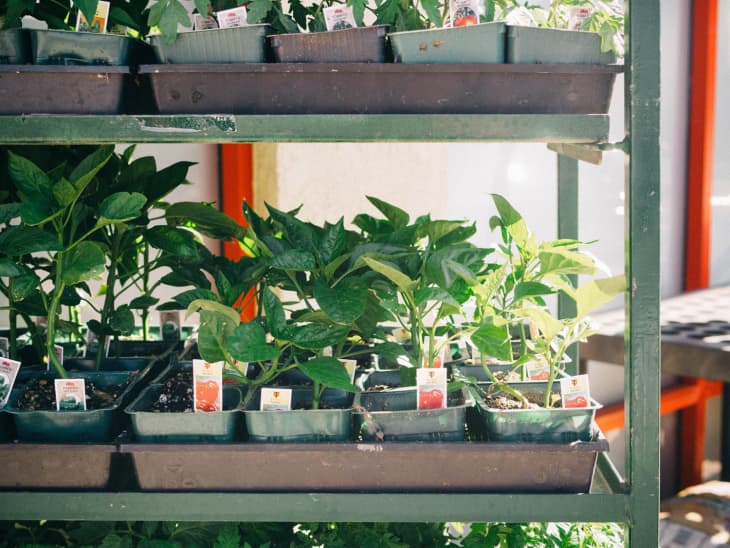The Fun Part: Choosing the Right Plants for Your Space and Lifestyle

You’ve got the site and the soil dialed in, and now comes the fun part: the plants! Part of making your garden plan is deciding what types of plants you want to grow and how they’ll coexist in your space.
All of the
previous lessons — knowing how much sun your yard receives each day, what climate zone you’re in, and when you’re ready to plant — will aid a great deal in this process, so be sure you read them before you move on.
Ornamental or Edible? Perennial or Annual?
In general, plants are categorized as ornamental (such as flowers and grasses, and often called patio plants) or edible (such as vegetables and herbs). They’re further narrowed down into perennial (those that come back every year) or annual (those that only last one season).
While the choice between ornamentals and edibles is based on your preferences and needs, a great garden should have a healthy mix of perennials and annuals, both for aesthetics and for ease of maintenance.
Annuals like zinnias and petunias dazzle all season long with their colorful show of blossoms, but die in the fall or when the first frost hits. Perennials like daylilies and peonies, on the other hand, have a much shorter bloom time but give a vibrant pop of color in the garden once the annuals have faded. They may cost more initially, but since you don’t have to replace them year after year, they end up being friendlier on your wallet and your time. By choosing perennials with varying bloom times and placing them strategically in your garden, you can keep a continual display of foliage and flowers going even after you’ve pulled out all the annuals.
The same is true of perennials and annuals in the edible realm. Adding perennials to a garden (such as artichokes, asparagus, radicchio, rosemary, and sage) helps offset the sparseness of the beginning and end of a growing season. While you wait for your annual crops to mature, you can continue to harvest your perennial vegetables and herbs — or at least enjoy their color until the rest of your garden fills in.
There’s also no reason you can’t interplant a few edibles in your ornamental garden, and vice versa. Many berries, herbs, and vegetables make striking landscaping plants, with the added benefit of being delicious to boot. Strawberries make beautiful border plants. Flowering basil not only grows into a fragrant and attractive bush, but is beneficial to pollinators. Unusual and colorful varieties of cabbage and kale blend in well with a flower bed, and if you have trouble deciding? Try edible flowers like carnations, pansies, and borage, which offer the best of both worlds.
If you have edible crops that require pollination, such as squash, you’ll need to ensure there’s a nectar source nearby to attract more bees. Thus, ornamental flowers serve a practical function as well as a pretty one.
Evaluating Plants Based on Growth Habits
How large will your plants become? What are their growth habits — are they upright, mounding, spreading, trailing?
Particularly with perennial trees and shrubs, size does matter. It’s hard to imagine the little plant you bring home from the nursery will eventually cover your window or take over your driveway, but it can and will happen if you don’t plan ahead. While you can prune the plant to keep it in line, why make it harder on yourself when you can simply choose a plant that suits the space you have.
Planting a Garden to Suit Your Lifestyle
The types of plants you choose should also complement your current lifestyle, be it time, attention, or personality. If you work 60 hours a week, you’re not likely to want a garden that demands your undivided attention on weekends. On the other hand, if you work from home or enjoy unwinding outside, you can probably handle a more high-maintenance garden that becomes your hobby.
When deciding what plants to add to your garden, consider:
- How hardy are the perennial plants to your climate zone? Are they short-lived and will they need to be replaced in a couple of years?
- How often will they need to be watered, and are you able to install an automatic irrigation system if needed?
- Do they require regular pruning, deadheading, or trellising throughout the season?
- Are they susceptible to pests or diseases, and if so, are there other varieties bred to combat these problems?
Expert Tip: Watch out for unintentional “weeds.” Weeds are not solely the stuff of dandelions and thistles. Many plants can become invasive in a garden if you don’t keep a close eye on their spreading and seeding habits. In particular, watch out for mint, fennel, dill, shiso, nasturtiums, morning glories, Queen Anne’s lace, and other plants that spread by runners or self-seed freely. Left unchecked, they can quickly smother or overtake other plants.